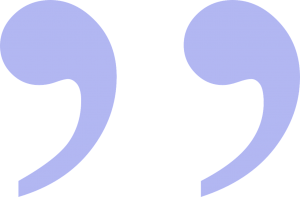Automated help in editing material intrigues most writers. I looked at six online automated editing tools. I chose the ones that were free or had free options, hoping to buy one that fit my budget and editing needs.
For a nice overview of free and for-sale editing tools, I recommend “INSTANTLY IMPROVE YOUR WRITING WITH THESE 11 EDITING TOOLS” on the NY Book Editors blog.
My Approach to Evaluating Automated Editing Tools
I entered the same excerpt from an old unpublished manuscript into the free online edit boxes for the following automated editing services:
Below is what I learned. Remember, I only tried the free options.
• These services point us to areas in our manuscripts that may need a second look. When we enter our material into these tools, we’re responsible for what we change in our manuscripts. We must remain in charge.
• If we make a change without scanning nearby sentences, we may cause a new problem. For example, the automated program may suggest a stronger word, but the stronger word has already been used once or twice in the paragraph, causing repetitive word usage.
• Using two or more free services may catch more problems. For example, passive-writing flags were different among the tools, suggesting they have different criteria for what is passive writing. One service flagged just, a weasel word, the others didn’t.
• The free tools didn’t do well on problems such as missing quotation marks and two spaces between sentences. The grammar and spelling checks in word processing programs are still important.
• I liked ProWritingAid best.
What I Liked About ProWritingAid
Among other benefits, here’s what I liked about ProWritingAid’s tool.
• ProWritingAid states on its site “ProWritingAid never stores, shares or resells your text.”
• I can click on 10 tabs: Summary, Style, Grammar, Overused, Readability, Clichés, Sticky, Diction, All Repeats, and Echos, which concentrate on specific tests.
• I can look at ProWritingAid’s extensive evaluation of my excerpt in the Summary tab. It offers easy to print, open in a new window, and email options. I like its suggested limits on such items as adverbs used and repeated sentence starts.
• ProWritingAid gives a word substitute for a wordy phrase.
• It attempts to highlight instances when the writer tells a feeling instead of showing it.
• It tries to catch words that should be hyphenated or a homonym (you’re) that is incorrect for the meaning (your).
• When I hover over the underlined, color-coded flagged phrases, ProWritingAid, gives possible problems and suggestions for the correction.
• It caught more of the problems I hoped the tools would flag than the other tools.
ProWritingAid’s free version was very good, but I bought the premium version.
If you’re looking for an editing tool to supplement your editing, I suggest you try out each of the tools mentioned in the post and other services you find in a search.
My search for an automated editing tool among free ones. Click to tweet.
What automated editing tools do you use and why?






 RSS - Posts
RSS - Posts



Thank you, thank you, thank you!
You are so welcome, Marcia.
This is a timely post. I am using the trial version of SmartEdit, and have been impressed with it. I was just about to buy the premium version when I decided to check email first. And here you are! I’m going to take a look at your recommendation first. Once again, thank you for sharing what you are learning. I know you are thorough and I value your opinions and suggestions.
Happy editing!
Yes, look at the free version of ProWritingAid. SmartEdit sounds good from what you said.
It’s me again. I looked at the link for various editing tools and see why you didn’t list SmartEdit, since it’s PC only, though they are working on a Mac version. What I like is that it’s embedded in Word. I open my document, then just go up to the toolbar and select what I want SmartEdit to check. It gives me a list of occurrences (and the number) in a box on the left, and a window on the right that shows the a list of the sentences with the suspected error. When I click on one, the cursor lands on that sentence in the document, highlighted, and gives me a chance to read as much as I want before and afterward, so I don’t accidentally use the same word that is two lines above. When I make changes it is to the main document, so no confusion about where I’ve made changes, which I had when trying other editing programs that required copying and pasting part of my manuscript into their program. I have also found other things that needed to be tightened since I wasn’t reading inline, lulled by the storyline. So, my question is, how does this compare to the way you use ProWritingAid?
Hi Jane, I’ve just started using the paid ProWritingAid and learning all its features. I need a block of time to get more set up. I’ve been using its basics and am pleased with what it has caught. So much there it can be a little overwhelming. That’s why I need some time to devote to it. Do you use SmartEdit on critique submissions you receive?
No, though it would be valuable, to use the time for content editing rather than the nitpicky stuff. I have only been using it a week.
With yours does it work within your whole manuscript?
Here’s what ProWritingAid says: Being able to edit where you write saves you time and effort. Copying back and forth to an online editor can lose your formatting and frustrate you. That’s why we’ve built more integrations than any other editing software.
Great. I’ll have to check it out. Thanks.
I wish I could find checks of opening-and-close quotation marks. I saw a code for it once, but didn’t know where to put the code.
Hi Katheryn, my Word checker catches them, but the little green squiggly underline is easy to not always see. I don’t know the code. Please share it if you ever find it again.